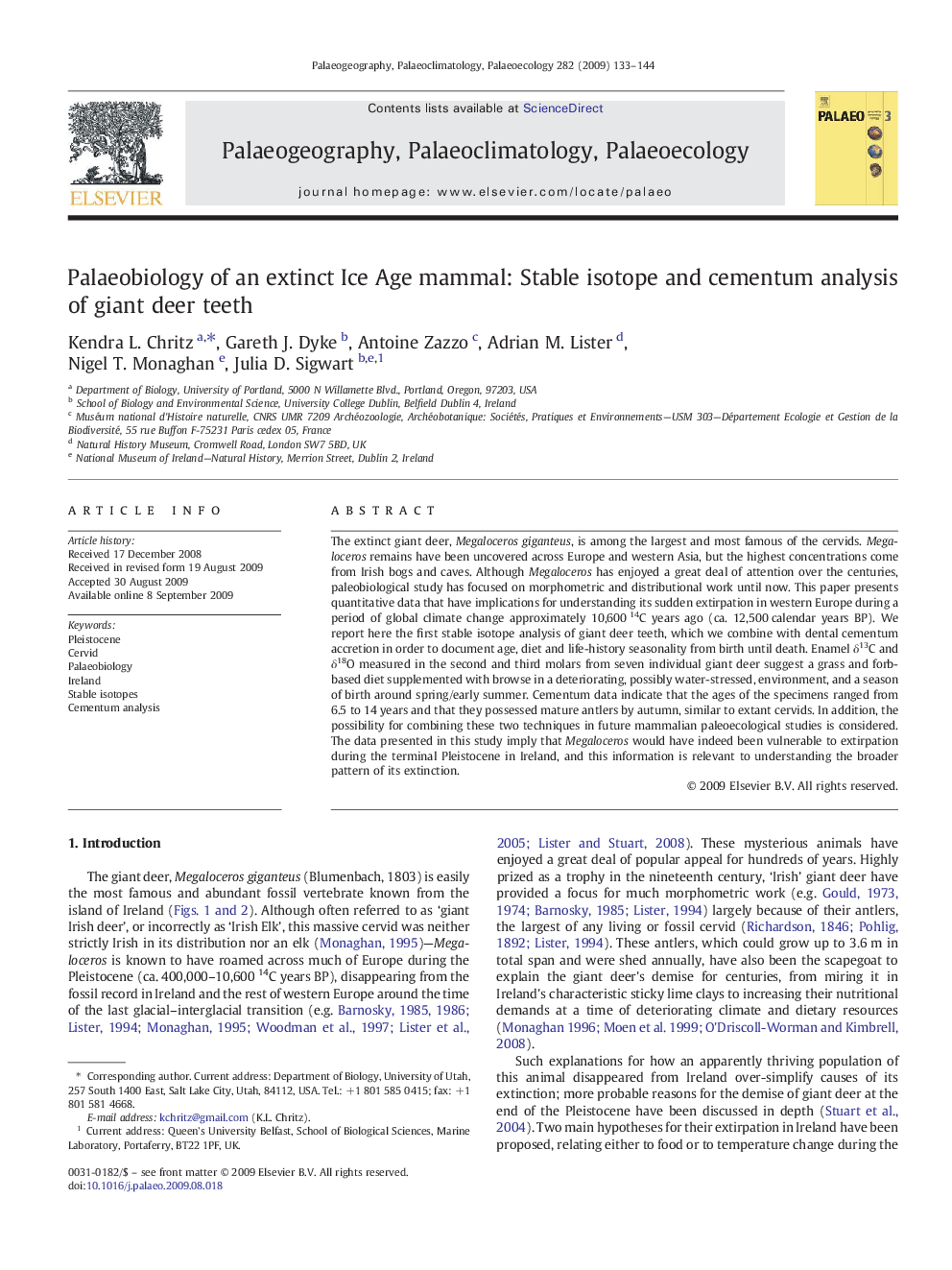| Article ID | Journal | Published Year | Pages | File Type |
|---|---|---|---|---|
| 4467927 | Palaeogeography, Palaeoclimatology, Palaeoecology | 2009 | 12 Pages |
The extinct giant deer, Megaloceros giganteus, is among the largest and most famous of the cervids. Megaloceros remains have been uncovered across Europe and western Asia, but the highest concentrations come from Irish bogs and caves. Although Megaloceros has enjoyed a great deal of attention over the centuries, paleobiological study has focused on morphometric and distributional work until now. This paper presents quantitative data that have implications for understanding its sudden extirpation in western Europe during a period of global climate change approximately 10,600 14C years ago (ca. 12,500 calendar years BP). We report here the first stable isotope analysis of giant deer teeth, which we combine with dental cementum accretion in order to document age, diet and life-history seasonality from birth until death. Enamel δ13C and δ18O measured in the second and third molars from seven individual giant deer suggest a grass and forb-based diet supplemented with browse in a deteriorating, possibly water-stressed, environment, and a season of birth around spring/early summer. Cementum data indicate that the ages of the specimens ranged from 6.5 to 14 years and that they possessed mature antlers by autumn, similar to extant cervids. In addition, the possibility for combining these two techniques in future mammalian paleoecological studies is considered. The data presented in this study imply that Megaloceros would have indeed been vulnerable to extirpation during the terminal Pleistocene in Ireland, and this information is relevant to understanding the broader pattern of its extinction.
